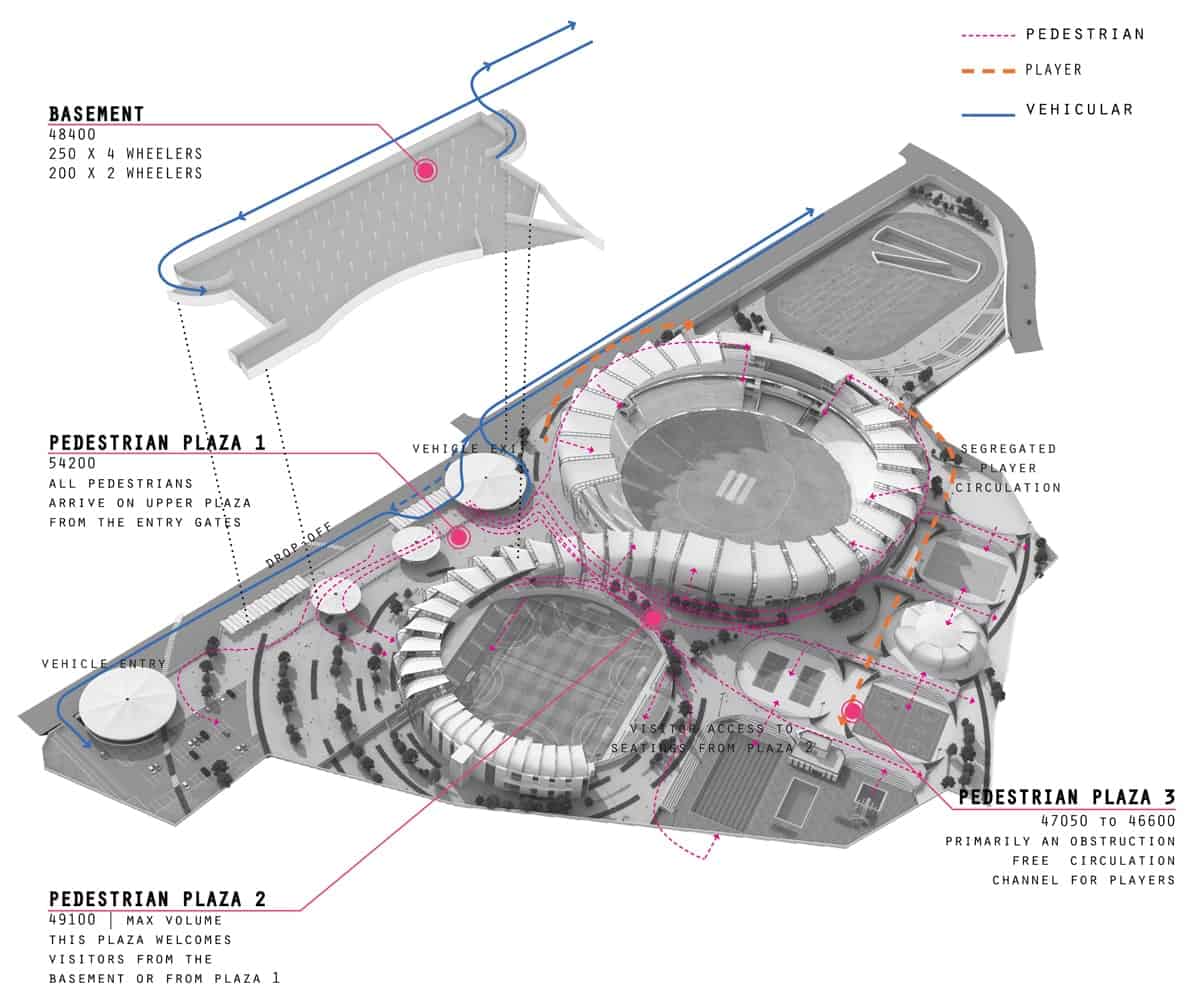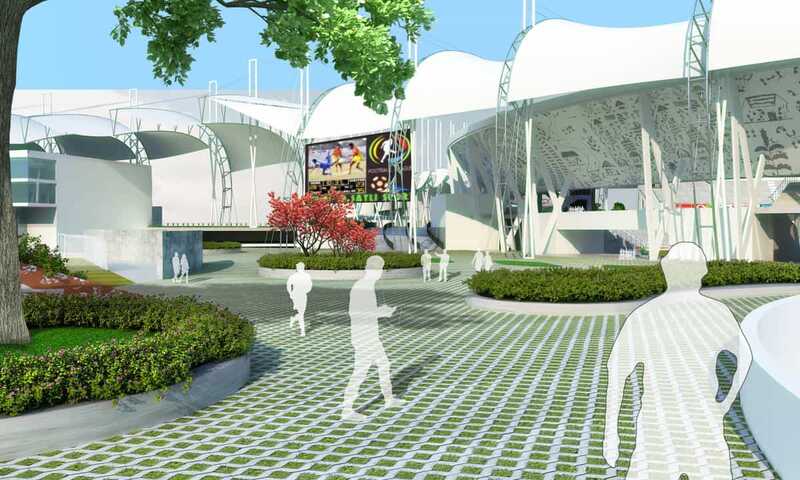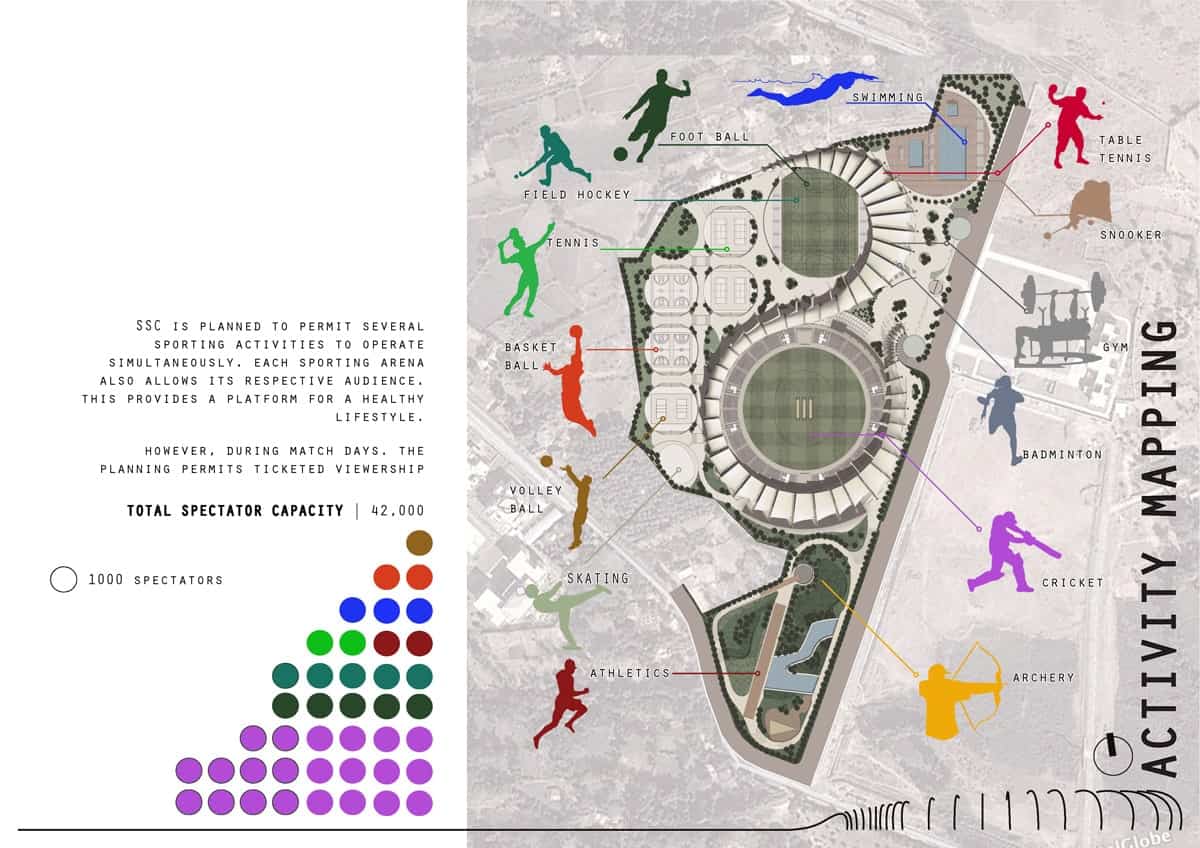The sports we know and love may remain the same over the years,
but the way we enjoy watching sports is constantly evolving.
Modern sports facilities and venues around the world do not look the same as their predecessors,
simply because the modern design and architecture of the stadium are driven by consumer trends as well as the innovative ideas of clubs,
investors and governing organizations.
From the Beautiful Tour Academy and Club in Aqaba, to the Emirates Stadium at Arsenal and beyond,
stadium engineering and design have become a science and art form.
The revolution in the sector is not only driven by entertainment trends or the need for more immersive experiences,
but also by drawing on painful lessons learned from disasters on stadiums across Europe during the 1970s and 1980s.
Governments and investors have made great strides to ensure the safety of modern stadiums,
because safety is one of the driving factors for design and architecture in this area nowadays,
and today we’ll look at how this and other factors shape the industry as a whole.

1- The science of proper management
Sound is one of the most important components of the viewing experience,
and when used and shaped in the right way, it can transform spectators into participants.
And this is exactly what the modern audience wants and needs, while the viewer is unable to actively participate,
the venue’s acoustics are more than enough to push them to the edge of their seat and make them feel that their voice matters.
The roar of the crowd must not be suppressed, the voice of the commentators must be clear,
and every sound that comes out of the stadium must be heard in the furthest seats by working closely with professional sound designers
who specialize in sound optimization for large indoor and outdoor spaces.
Architects can achieve these effects to provide a more immersive experience for everyone in the audience.

- Incorporating the best technology
Technology is a major driver of change in the world of architecture and design,
it allows architects to bring innovative ideas to life,
and it can also appeal to a modern audience by implementing them in space.
The same applies to stadiums and sports stadiums,
where the modern audience wants and needs better technical solutions to bring crystal clear sound and HD visuals into every corner of the venue,
and of course it is not only about better sound or images, it is also about the connectivity of space.
Experienced designers are well aware that visitors want to stay in touch and want to enjoy the technical benefits they used to have elsewhere around town,
which is why integrating superfast Wi-Fi systems with complete mobile coverage is an important step.
This helps create an immersive experience for everyone and allows fans to communicate seamlessly from different parts of the stadium.
Create the perfect atmosphere with lighting
We always hear conversations about the importance and power of artificial lighting in the fields of architecture and design,
where the right lighting system has the power to completely change the setting and expand the ambiance quite correctly.
And when it comes to sports venues, it has the power to transform the viewing experience,
however we must note that lighting manufacturers and engineers also place great emphasis on energy efficiency and cost reduction through lighting technology.
This is how some famous manufacturers around the world provide their services to the sector,
meeting sport lighting standards, ensuring safety and efficiency, but also optimized for a first-class viewing experience.
And when it comes to lighting a sports field, there’s no room for error,
but architects and designers know that a seating area also needs the right kind of lighting to frame the design and ensure the safety of the crowd.

Maximize your return on investment with a multi-purpose venue design
Sports venues can serve a distinct purpose if the investor so desires,
such as an investor who needs a purpose-built soccer or tennis court, and of course each sport has its own unique requirements,
and its stadium must look a certain way in terms of providing the appropriate features and experiences for the audience and players.
However, this does not mean that multi-purpose design is not on the rise, rather, on the contrary, in 2021 and the coming years,
we will see designers and architects undertaking innovative projects such as designing and building hybrid multi-purpose stadiums capable of accommodating various sporting events.
The modular design combined with adequate lighting and technology will allow the stadiums to attract a diverse audience,
thus maximizing the return on investment.
Provide an overall experience for visitors
Finally, it is important to note that the modern design of the stadium aims to provide a comprehensive experience for its visitors,
and now that sporting events are more sustainable, providing more services to the public is easier than ever,
such as restaurants, nurseries, various facilities and entertainment centers.
Incorporating spaces and counting additional factors into the design process is crucial to immersing the modern visitor and inspiring people to converge in a space that meets all of their needs.
In the end we can say that architecture and sports design is constantly evolving with new trends.
In 2021 and the coming years, we will see these trends outpace these sectors in an effort to provide better viewing experiences for visitors and higher returns for investors.



 العربية
العربية
Comments are closed.